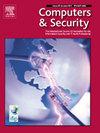Enhanced biometric template protection schemes using distance based fuzzy extractor
IF 4.8
2区 计算机科学
Q1 COMPUTER SCIENCE, INFORMATION SYSTEMS
引用次数: 0
Abstract
The biometric template protection systems are essential for improving the security of biometric authentication systems in Internet of Things (IoT)-based applications. However, insufficient user data, compromised keys, and privacy concerns raise significant challenges regarding the reliability and security of these systems. One critical challenge is unauthorized access to biometric templates, which exposes users to potential security threats. The proposed system addresses this by employing a novel technique that enhances template security through a cancellable biometric (CB) scheme. While CB schemes improve security by applying a one-way transformation to the biometric template, they often suffer from decreased accuracy due to the complexity of transformations applied to the feature vector. To overcome these limitations, the proposed system integrates a Self-learning based Multi-scale Residual Convolutional Neural Network (SM-ResCNN) for feature extraction, which improves classification accuracy by capturing features at various scales. These features are then classified by an Enhanced Random Forest (MRF) classifier, ensuring high accuracy while mitigating overfitting. Additionally, the Distance-based Fuzzy Extractor (DFE) is employed for cancellable template protection, converting biometric data into uniformly arbitrary and reproducible random strings, enhancing security without compromising performance. The performance of the proposed approach is simulated in the FERT and CASIA datasets and contrasted with state-of-the-art methods. The recognition rates obtained with the FERET and CASIA datasets are 99.81 % with 0.015 Equal error rate (EER) and 99.7 % with 0.0211 EER, respectively. The study shows that the proposed method significantly improves biometric authentication security while maintaining high classification accuracy, outperforming existing state-of-the-art methods.
基于距离模糊提取的增强生物特征模板保护方案
生物识别模板保护系统对于提高基于物联网(IoT)应用的生物识别认证系统的安全性至关重要。然而,用户数据不足、密钥泄露和隐私问题对这些系统的可靠性和安全性提出了重大挑战。一个关键的挑战是未经授权访问生物识别模板,这将使用户面临潜在的安全威胁。该系统采用一种新颖的技术,通过可取消的生物特征(CB)方案增强模板安全性,从而解决了这个问题。虽然CB方案通过对生物特征模板进行单向转换来提高安全性,但由于对特征向量进行转换的复杂性,它们通常会降低准确性。为了克服这些限制,该系统集成了基于自学习的多尺度残差卷积神经网络(SM-ResCNN)进行特征提取,通过捕获不同尺度的特征来提高分类精度。这些特征然后由增强型随机森林(MRF)分类器分类,确保高精度,同时减轻过拟合。此外,采用基于距离的模糊提取器(DFE)进行可取消模板保护,将生物特征数据转换为均匀任意且可重复的随机字符串,在不影响性能的情况下提高安全性。在FERT和CASIA数据集上对该方法的性能进行了仿真,并与现有方法进行了对比。FERET和CASIA数据集的识别率分别为99.81%(等效误差率为0.015)和99.7%(等效误差率为0.0211)。研究表明,该方法显著提高了生物识别认证的安全性,同时保持了较高的分类精度,优于现有的最先进的方法。
本文章由计算机程序翻译,如有差异,请以英文原文为准。
求助全文
约1分钟内获得全文
求助全文
来源期刊

Computers & Security
工程技术-计算机:信息系统
CiteScore
12.40
自引率
7.10%
发文量
365
审稿时长
10.7 months
期刊介绍:
Computers & Security is the most respected technical journal in the IT security field. With its high-profile editorial board and informative regular features and columns, the journal is essential reading for IT security professionals around the world.
Computers & Security provides you with a unique blend of leading edge research and sound practical management advice. It is aimed at the professional involved with computer security, audit, control and data integrity in all sectors - industry, commerce and academia. Recognized worldwide as THE primary source of reference for applied research and technical expertise it is your first step to fully secure systems.
 求助内容:
求助内容: 应助结果提醒方式:
应助结果提醒方式:


